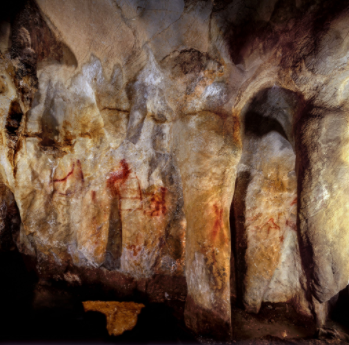Discovery Made about Neanderthals

March 27, 2018
When most people think of Neanderthals, they think of slow, unintelligent, human-like creatures. They were essentially that. They are related in some way to Homo sapiens, modern humans, but had limited mental functions compared to Homo sapiens, or so we thought. A recent discovery has been made that challenges this notion.
Cave paintings are some of the earliest examples of art and human culture in the world. Most of them were made by Homo sapiens. But recently, one cave was found where the paintings were made by Neanderthals. This cave is located in Spain and called Cueva de los Aviones. The paintings were found to be 65,000 years old (Greshko). This discovery gives evidence to suggest that Neanderthals were actually smarter than we originally thought.
While this discovery may not seem that important, it provides evidence on what Neanderthals were like. As you may know, Neanderthals are thought to be less intelligent, backwards creatures. These cave paintings show that Neanderthals may have had some form of culture. Cave paintings often contain some form of symbolism in them. Someone would have to be fairly intelligent to understand the concept of symbolism, an intelligence Neanderthals were thought not to possess (Becker).
There are still so many discoveries to be made about the past. If Neanderthals were able to create something we previously assumed was too complex for their mental capacities, what else is there that we still have yet to uncover? What else can we learn from our past?
References:
Greshko, Michael. “World’s Oldest Cave Art Found.” National Geographic, National Geographic Society, 22 Feb. 2018, news.nationalgeographic.com/2018/02/neanderthals-cave-art-humans-evolution-science/.
Becker, Rachel. “Ancient Cave Paintings Turn out to Be by Neanderthals, Not Modern Humans.” The Verge, The Verge, 22 Feb. 2018, www.theverge.com/2018/2/22/17041426/neanderthals-cave-painting-spain-uranium-dating.




